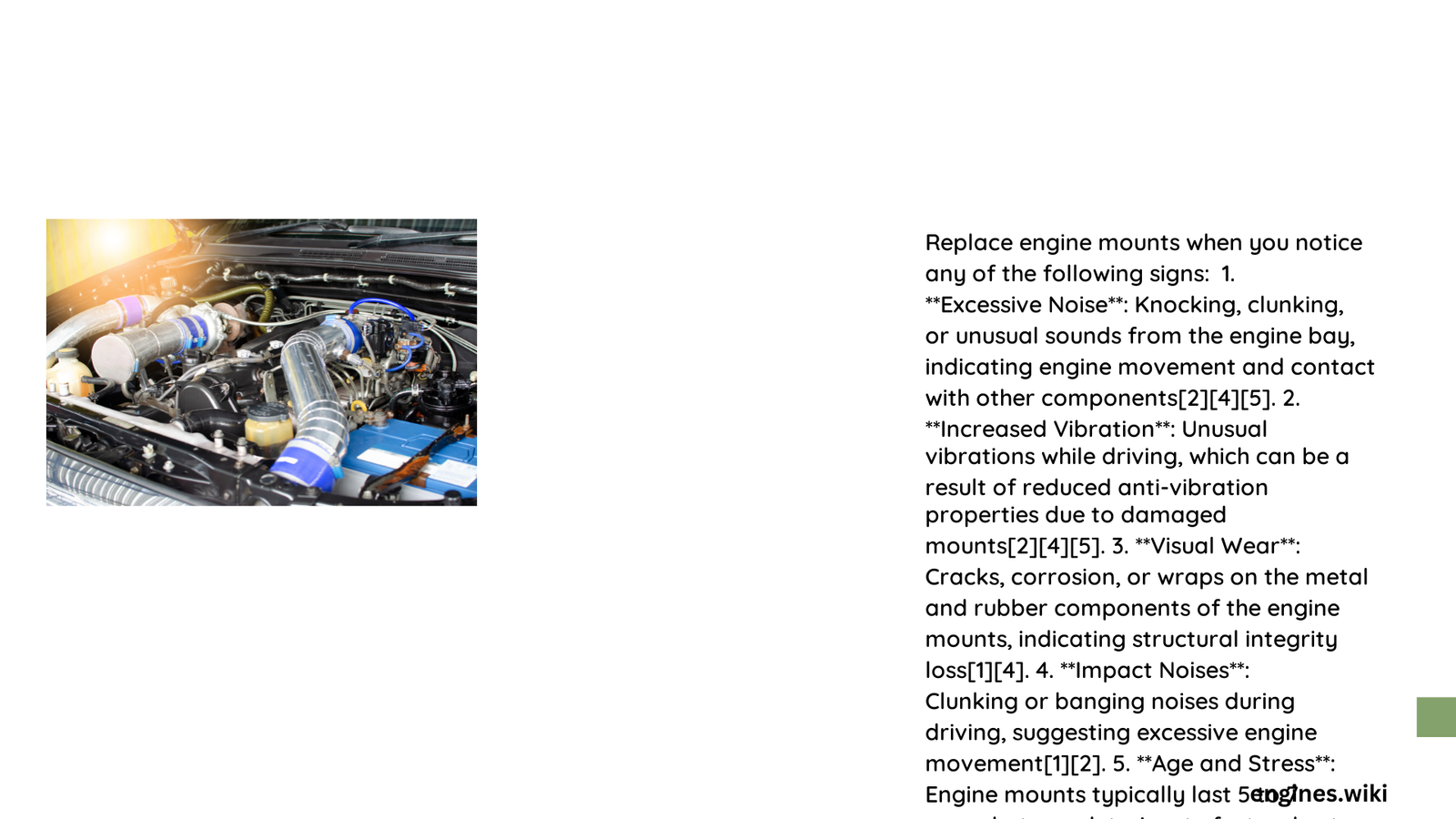Engine support systems are crucial for maintaining vehicle performance and preventing potential mechanical damage. Vehicle owners must recognize the subtle and obvious indicators that signal the need for engine mount replacement. Deteriorating engine supports can lead to significant mechanical complications, increased repair costs, and potential safety risks if left unaddressed.
What Are the Primary Indicators of Engine Support Failure?
How Do Vibrations Signal Engine Mount Problems?
Excessive engine vibrations represent the most immediate and noticeable sign of compromised engine supports. When rubber mounting components deteriorate, they lose their ability to absorb mechanical energy effectively. Drivers might experience:
- Intense shaking during idle
- Noticeable cabin vibrations while accelerating
- Persistent tremors that increase with engine load
| Vibration Intensity | Potential Mount Condition |
|---|---|
| Mild Vibration | Early Stage Wear |
| Moderate Vibration | Significant Deterioration |
| Severe Vibration | Immediate Replacement Needed |
What Unusual Sounds Suggest Engine Support Replacement?
Distinctive sounds can indicate mounting system failure:
- Knocking Noises: Sharp impacts during acceleration or gear shifts
- Clunking Sounds: Particularly noticeable when changing driving directions
- Metallic Banging: Indicates potential structural mounting damage
How Does Engine Misalignment Manifest?
Worn engine supports can cause critical misalignment issues:
- Transmission performance degradation
- Uneven stress on drivetrain components
- Potential damage to surrounding mechanical systems
What Visual Symptoms Indicate Mount Replacement?
Technicians and observant vehicle owners should inspect for:
- Visible rubber cracking
- Fluid leakage around mount connections
- Visible metal component corrosion
- Sagging or asymmetrical mount positioning
Technical Considerations for Engine Support Replacement

What Factors Influence Mount Lifespan?
Several variables impact engine support durability:
- Driving environment (urban vs. highway)
- Vehicle age
- Maintenance history
- Load-bearing requirements
How Much Does Engine Support Replacement Cost?
Cost considerations include:
- Individual mount pricing: $10 – $200 per mount
- Labor expenses: $100 – $300
- Total replacement: $300 – $800 depending on vehicle complexity
Professional Recommendations
When Should Professional Inspection Occur?
- Every 50,000 miles
- During routine maintenance
- Immediately upon experiencing performance anomalies
What Are Potential Consequences of Delayed Replacement?
Postponing engine support replacement can lead to:
- Increased mechanical stress
- Potential transmission damage
- Compromised vehicle handling
- Higher long-term repair expenses
Diagnostic Approach
How Can Owners Self-Diagnose Mount Issues?
- Conduct visual inspections
- Monitor vibration characteristics
- Listen for unusual mechanical sounds
- Track vehicle performance changes
Conclusion
Proactive maintenance and timely engine support replacement are essential for preserving vehicle performance, safety, and longevity. Regular inspections and immediate action upon detecting warning signs can prevent costly mechanical failures.
